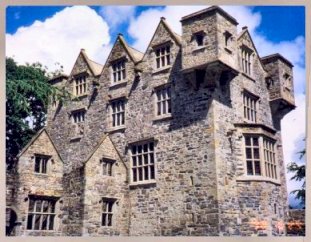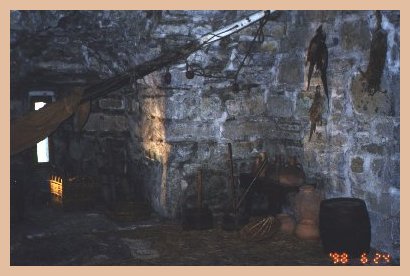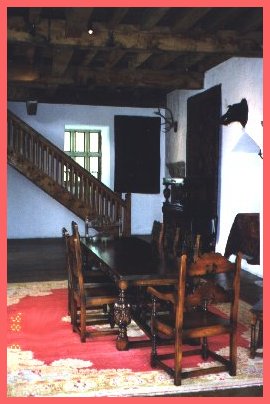|
The first Red Hugh O'Donnell, who died in 1505 in the 78th year of his life, is recorded as having built a castle for himself and a convent for the Franciscan Order in Donegal. It is known that the convent or friary was built in 1474 and it is likely that the castle was built about the same time. |
|
|
Sir Henry Sydney, an English deputy writing of a visit to Donegal in 1566, says of O'Donnell's castle: "It is the greatest I ever saw in
Ireland and in an Irishman's hands and would appear to be in good keeping; one of the fairest situated in good soil and so nigh a portable water as a boat of ten tons could come within twenty yards of it".
|
|
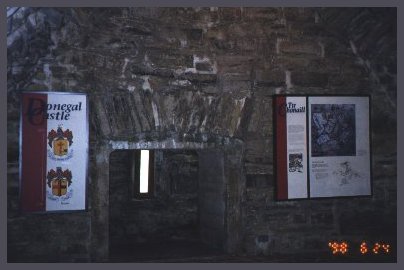 (This is the view as you enter the Tower)
|
|
|
Walk straight ahead and start to climb the tower stairs - the stairs are narrow, steep and circle around....the stones are smooth and shallowed out in places from the footfalls of people who climbed these same steps over the centuries.
|
|
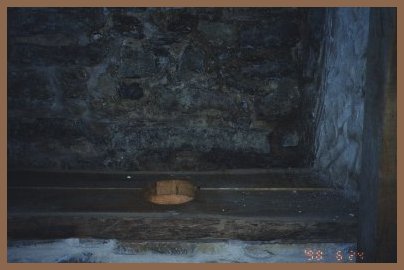 |
Half-way to the first floor is this little room on the left side. The sign outside explains it all: 'The Garderobe....Garderobe is an old word for what we would call a toilet. This was a small room containing a wooden seat with a hole in it. Waste would fall down a chute built into the castle wall and into a pit in the ground below.' |
|
|
|
|
On the first floor, you will find a beautifully restored room, with a high ceiling and the original fireplace - the fireplace unfortunately, is engraved with Basil Brooke's family crest.
|
|
|
You then climb the wooden staircase to the top floor. This floor contains display cabinets full of information on the O'Donnell's. Some of the cabinets also contain models of the castle at different stages of it's occupation. This photograph on the right is a depiction of the castle when the O'Donnell's were residing there, before it was given to Basil Brooke to play with. |
 |
|
|
|
|
The ceiling has been faithfully reconstructed to be as close as possible to the original and is quite magnificent. |
|
| (Note: Some of the text for this page was sourced from the book 'O'Donnells of Tir Chonaill' edited by V. O'Donnell) |
|
